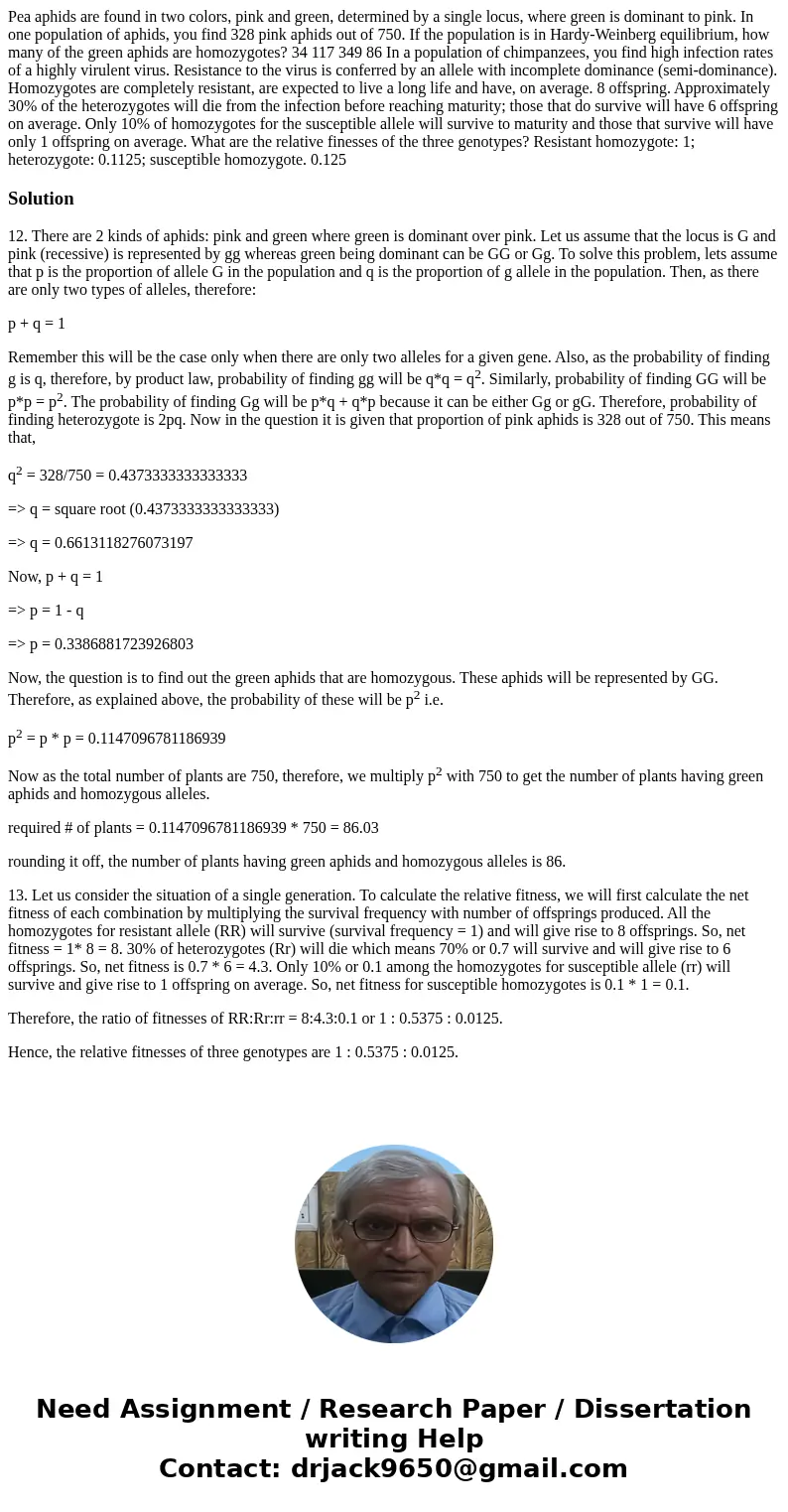Pea aphids are found in two colors pink and green determined
Solution
12. There are 2 kinds of aphids: pink and green where green is dominant over pink. Let us assume that the locus is G and pink (recessive) is represented by gg whereas green being dominant can be GG or Gg. To solve this problem, lets assume that p is the proportion of allele G in the population and q is the proportion of g allele in the population. Then, as there are only two types of alleles, therefore:
p + q = 1
Remember this will be the case only when there are only two alleles for a given gene. Also, as the probability of finding g is q, therefore, by product law, probability of finding gg will be q*q = q2. Similarly, probability of finding GG will be p*p = p2. The probability of finding Gg will be p*q + q*p because it can be either Gg or gG. Therefore, probability of finding heterozygote is 2pq. Now in the question it is given that proportion of pink aphids is 328 out of 750. This means that,
q2 = 328/750 = 0.4373333333333333
=> q = square root (0.4373333333333333)
=> q = 0.6613118276073197
Now, p + q = 1
=> p = 1 - q
=> p = 0.3386881723926803
Now, the question is to find out the green aphids that are homozygous. These aphids will be represented by GG. Therefore, as explained above, the probability of these will be p2 i.e.
p2 = p * p = 0.1147096781186939
Now as the total number of plants are 750, therefore, we multiply p2 with 750 to get the number of plants having green aphids and homozygous alleles.
required # of plants = 0.1147096781186939 * 750 = 86.03
rounding it off, the number of plants having green aphids and homozygous alleles is 86.
13. Let us consider the situation of a single generation. To calculate the relative fitness, we will first calculate the net fitness of each combination by multiplying the survival frequency with number of offsprings produced. All the homozygotes for resistant allele (RR) will survive (survival frequency = 1) and will give rise to 8 offsprings. So, net fitness = 1* 8 = 8. 30% of heterozygotes (Rr) will die which means 70% or 0.7 will survive and will give rise to 6 offsprings. So, net fitness is 0.7 * 6 = 4.3. Only 10% or 0.1 among the homozygotes for susceptible allele (rr) will survive and give rise to 1 offspring on average. So, net fitness for susceptible homozygotes is 0.1 * 1 = 0.1.
Therefore, the ratio of fitnesses of RR:Rr:rr = 8:4.3:0.1 or 1 : 0.5375 : 0.0125.
Hence, the relative fitnesses of three genotypes are 1 : 0.5375 : 0.0125.

 Homework Sourse
Homework Sourse